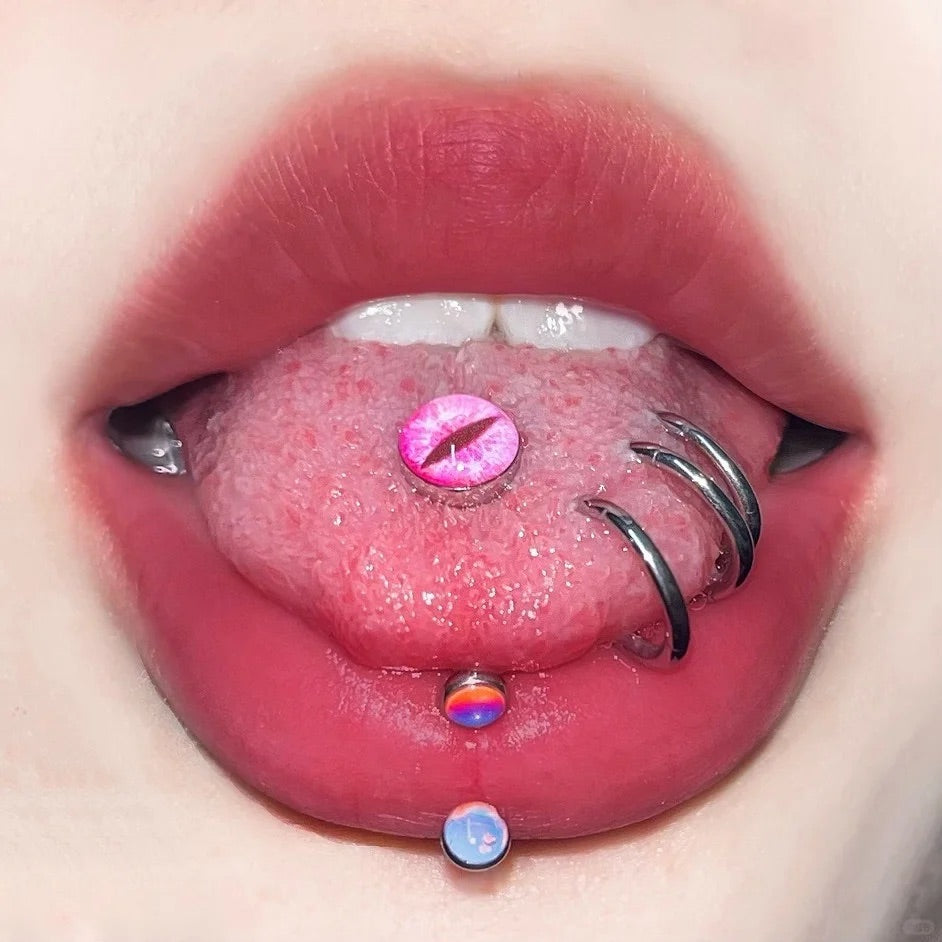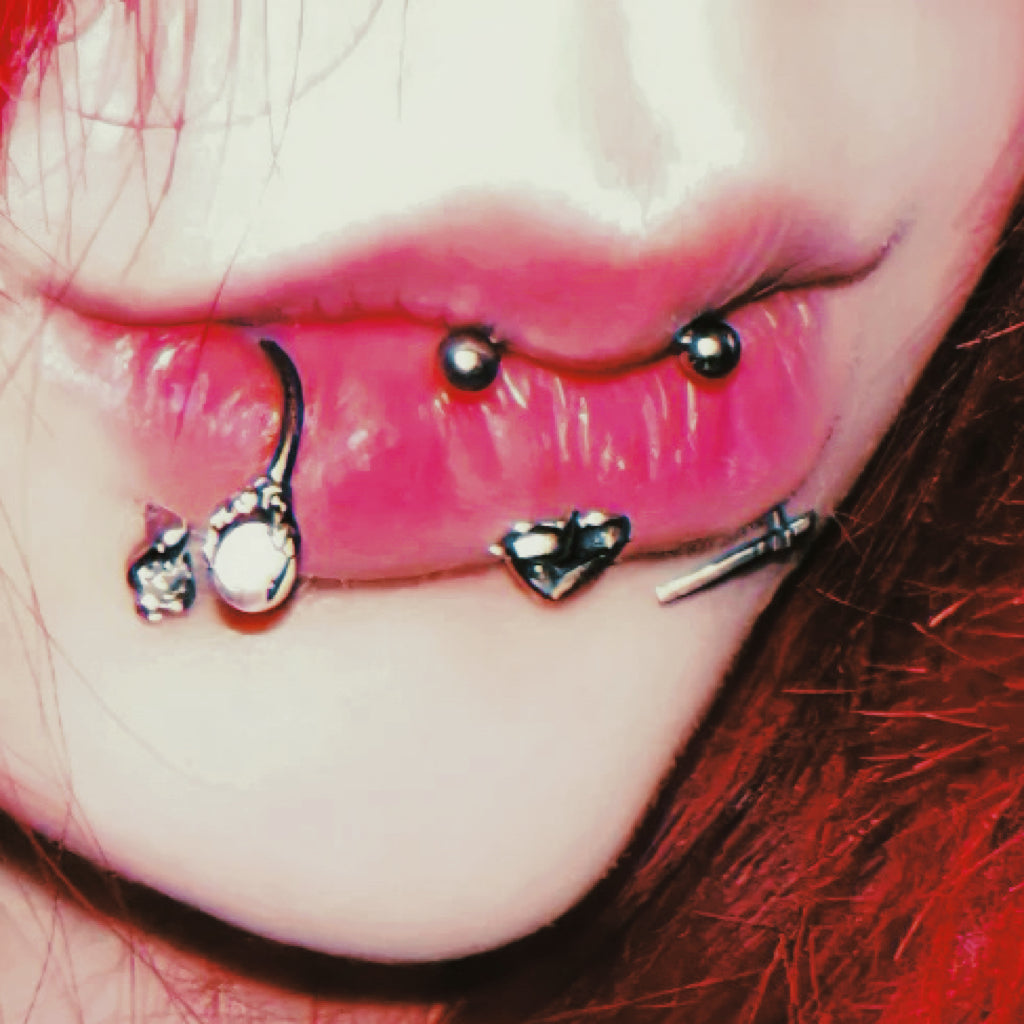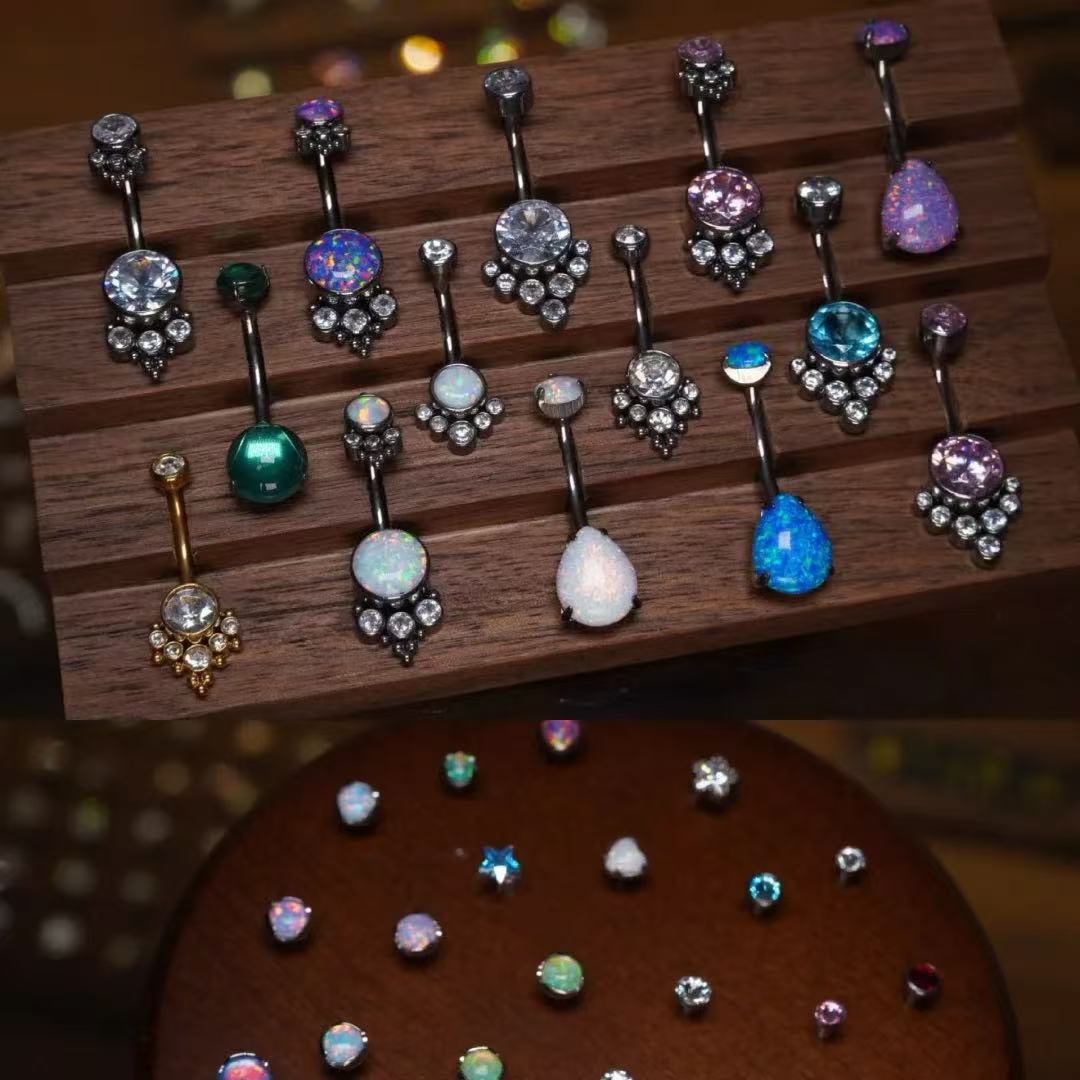
Tongue Piercing 2025: The Definitive Guide to Style, Safety, and Aftercare
Introduction
Tongue piercings continue to be one of the most popular and evolving forms of body modification in 2025. What began as a subcultural statement has transformed into a mainstream personal expression, with advancements in technique, jewelry, and aftercare making it safer and more customizable than ever before. This comprehensive guide incorporates the latest professional standards, scientific research, and industry developments to help you make an informed decision about your tongue piercing journey.
Tongue Piercing Types: Comparison Table (2025 Standards)

| Piercing Type | Placement | Pain Level (1-10) | Healing Time | Risk Level | Best For |
|---|---|---|---|---|---|
| Midline Vertical | Center of tongue, avoiding frenulum | 4-6 | 4-6 weeks | Low | First-time piercings, traditional look |
| Venom Piercings | Dual symmetrical placements on sides | 5-7 | 6-8 weeks | Medium | Experienced wearers, unique style |
| Snake Eyes | Horizontal at tongue tip | 7-9 | 8-12 weeks | High | Visual impact (not recommended) |
| Frenulum/Web | Underneath tongue tissue | 3-5 | 3-5 weeks | Low-Medium | Discrete placement |
| Surface/Scoop | Surface-level curvature | 6-8 | 8-10 weeks | High | Advanced enthusiasts |
Data compiled from 2025 APP (Association of Professional Piercers) safety guidelines
The 2025 Piercing Procedure: Step-by-Step Process
Pre-Piercing Consultation
Reputable studios now require comprehensive consultations including:
-
Medical history review
-
3D tongue mapping to identify blood vessels
-
Jewelry material compatibility testing
-
Realistic healing timeline discussion
The Procedure Itself
Using single-use, sterilized equipment, the process involves:
-
Topical numbing (if desired and clinically appropriate)
-
Strategic marking with surgical pen
-
Clamping and precise needle insertion
-
Immediate jewelry placement
-
Detailed aftercare instructions
Pain levels typically range from 4-6/10, with most clients reporting pressure rather than sharp pain. The clamping sensation often proves more noticeable than the actual piercing.
Healing Timeline: What to Expect
Stage-by-Stage Recovery Process
| Healing Phase | Duration | Symptoms | Care Requirements |
|---|---|---|---|
| Initial Healing | Days 1-7 | Swelling, tenderness, excess saliva | Soft foods, ice chips, salt rinses |
| Early Recovery | Weeks 2-3 | Reduced swelling, tissue formation | Gentle cleaning, avoid irritants |
| Maturation | Weeks 4-6 | Minimal discomfort, strengthening | Downsize jewelry, monitor fit |
| Complete Healing | Weeks 7-8+ | No pain, normal function | Regular maintenance, dental checkups |
2025 Development: Biocompatible healing patches containing hyaluronic acid and antimicrobial peptides can now reduce healing time by up to 30% when applied during the first week.
Jewelry Options: 2025 Materials Comparison
Material Safety Guide
| Material Type | Cost Range | Safety Rating | Best For | Considerations |
|---|---|---|---|---|
| Implant Titanium | $40-80 | ★★★★★ | Initial piercings, sensitive skin | Hypoallergenic, lightweight |
| PTFE Flexible | $35-70 | ★★★★☆ | Tooth protection, comfort | Less durable, frequent replacement |
| 14K-18K Gold | $100-300 | ★★★★☆ | Healed piercings, aesthetics | Requires alloy verification |
| Surgical Steel | $30-60 | ★★★☆☆ | Budget option, short-term | Nickel content concerns |
| Biocompatible Polymers | $80-150 | ★★★★★ | Allergy prevention | New technology, limited availability |
Popular Jewelry Styles 2025
-
Threadless Press-Fit Barbells: Dominating the market due to security and customization
-
Internally Threaded Designs: Reduced tissue trauma during changes
-
Magnetic Ball Systems: Emerging technology for easy changes
-
Smart Jewelry: LED-equipped options with changeable colors (for healed piercings only)

Health Considerations: Risk Assessment Table
Complication Probability Guide
| Risk Type | Probability | Severity | Prevention Methods |
|---|---|---|---|
| Swelling | 92% | Mild-Moderate | Ice chips, anti-inflammatories |
| Tooth Damage | 19-44% | Moderate-Severe | Proper jewelry size, regular checks |
| Gum Recession | 25-50% | Moderate | Correct placement, dental monitoring |
| Infection | 15-30% | Mild-Severe | Strict aftercare, hygiene practices |
| Nerve Damage | <2% | Severe | Professional placement, anatomy assessment |
Candidate Suitability Table
| Factor | Ideal Candidate | Poor Candidate |
|---|---|---|
| Oral Health | Excellent hygiene, no issues | Gum disease, tooth problems |
| Lifestyle | Non-smoker, minimal alcohol | Heavy smoking/drinking |
| Health Status | No autoimmune conditions | Diabetes, immune disorders |
| Commitment | Dedicated to aftercare | Unable to follow care instructions |
| Anatomy | Suitable frenulum placement | Restricted tongue movement |
Aftercare Protocol: Daily Routine Table
| Time | Action | Purpose | Duration |
|---|---|---|---|
| Morning | Antimicrobial mouthwash | Remove overnight bacteria | 30 seconds |
| After Meals | Saline rinse | Clear food particles | 60 seconds |
| Evening | Soft brushing + mouthwash | Full cleaning | 2 minutes |
| As Needed | Ice chips/cool water | Reduce swelling | Throughout day |
Conclusion
Tongue piercings in 2025 represent a blend of tradition and innovation, with improved safety protocols and expanding customization options. While risks remain, informed decision-making and professional care significantly reduce potential complications. Whether choosing a classic midline or contemporary venom placement, the key to successful piercing lies in selecting an APP-certified professional, committing to aftercare, and maintaining realistic expectations throughout the healing process.
Remember: Quality piercing is an investment in your body. Choose wisely, care diligently, and enjoy your expression responsibly.


